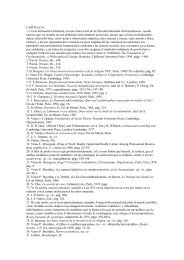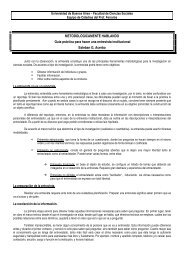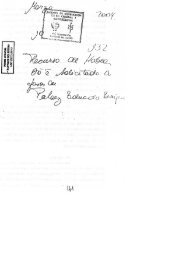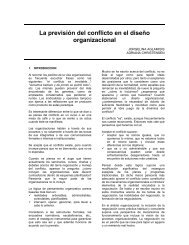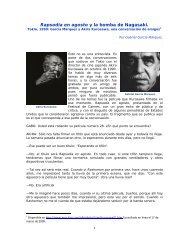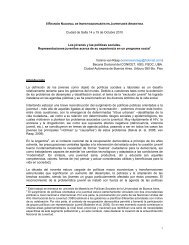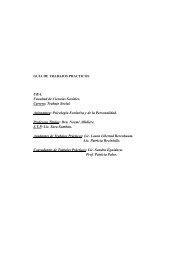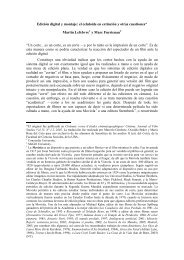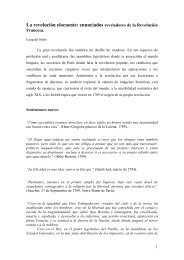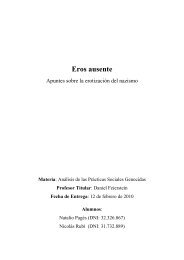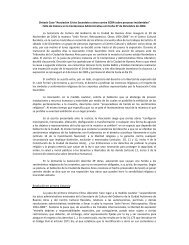Charisma Reconsidered
Charisma Reconsidered
Charisma Reconsidered
Create successful ePaper yourself
Turn your PDF publications into a flip-book with our unique Google optimized e-Paper software.
16<br />
She did not succeed by fulfilling the contemporary conventions of stardom,<br />
though her path to celebrity included succeeding in the face of various tests of her<br />
artistic prowess, which built a traditional ‘fan’ base.<br />
When Madonna wore jewelry that said ‘boy toy’ or wore underwear as a<br />
top layer of clothing, her fans imitated her actions, as well as her attitude. What<br />
was going on here? A simple explanation would be that Madonna had shown that<br />
one could ‘get away’ with doing those things and at the same time succeed – in<br />
this case in drawing attention. The ‘change’ in the followers can be understood<br />
thus: behavior that formerly would have been thought to be highly risky, and for<br />
this group of people to risk incurring the ridicule of peers would be the worst sort<br />
of risk, was changed by Madonna’s actions – shown to be something that one<br />
could do successfully. The change was in the fans’ perceptions of risk, and it was a<br />
result of nothing more mysterious than the fact that Madonna did as she did and<br />
survived, prospered, and had a powerful effect on those around her. A mode of<br />
behavior that had formerly been perceived as risky was no longer perceived as<br />
such, but rather as an opportunity to live in a different way, and to achieve<br />
previously unachievable results.<br />
In this case the shift in perceptions of risk and the creation of the<br />
possibility of a different mode of life is a matter of someone acting in a way that<br />
demonstrates the possibility by their own actions. Traditional charismatic leaders,<br />
in Weber’s own account, do something similar by passing tests, and by seeking<br />
new tests to demonstrate their charisma. For ‘conventional’ charismatic leaders,<br />
these tests are conventional; what is exceptional about such leaders is their<br />
prowess in the face of them. But at the same time their potential authority is<br />
restricted by conventional expectations about the behavior of leaders and the<br />
scope of their authority. In contrast, ‘originary’ charismatic leaders, that is to say,<br />
those who represent novel possibilities, do unexpected things, things that change<br />
ideas of what is possible, which is at the same time to change ideas about the risks<br />
that go along with possibilities. The difference between a Madonna and a<br />
Mandela is that the message of a political leader, like Mandela, is that a political<br />
possibility that has seemed impossible to achieve comes to be seen as possible only<br />
through commitment to his leadership – through obedience. Political leaders who<br />
are ‘originary’ charismatic leaders, leaders with a vision of new possibilities, must<br />
also produce a cognitive change in their followers: the evidence of their successful<br />
actions ‘proves’ that they are leaders who can achieve these novel possibilities,<br />
which amounts to proving that what was thought impossibly risky is, through the<br />
leader, at hand.<br />
Primitive <strong>Charisma</strong><br />
Connecting charisma to risk in this way solves a series of problems. First, it<br />
assimilates the explanation of charisma to a recognizable explanatory model:<br />
rational choice. The choice to follow a charismatic leader or model can now be<br />
JOURNAL OF CLASSICAL SOCIOLOGY VOL 3(1)



